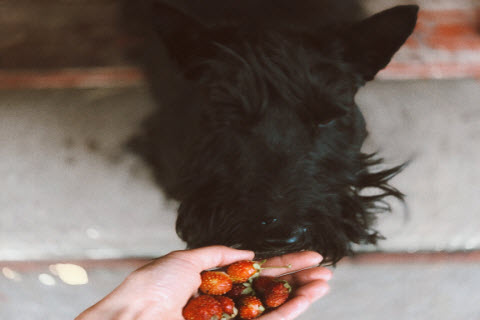
Most training methods involve the use of some kind of dog treat. Dogs are typically food motivated and we use this motivation to ingrain behaviors that we’d like to see in our pets. The idea is to simply link a treat with a desired behavior.
All dogs are different when it comes to the speed with which they learn, so some require more treats than others to reach a desired effect. Dog treats, as advertised in the major chain pet stores can be quite expensive, especially if you need a lot of them! There is a much simpler alternative, which might work even better.
Since the beginning of my experiences working with dogs, I have used only one kind of training treat…and that’s hot dogs! Most Dollar Stores in your area have a refrigeration section that includes hot dogs/franks. One package can potentially contain up to ten hot dogs. Each hot dog can provide, if diced properly, hundreds of treats.
First, cut one hot dog in half, and then in half again. Now take one of the four strips you’ve created and begin to cut it into small pieces. You can easily achieve 20-40 little pieces of hot dog from one of these strips. Once you’ve created your pile of hot dog pieces, spread them out on a microwave-safe plate or dish so that they are not overlapping each other. Finally, microwave the pieces (the time will depend, usually I test with 3 minutes to start) on HIGH.
When finished correctly, the treats will be dried but not burned. They can then be stored in a freezer in plastic freezer or sandwich bags. Due to their small size, you can always keep some on your person so that you won’t have to hunt a treat down when a training opportunity presents itself.
Of course, hot dogs aren’t healthy even for people if consumed in large quantities. As simple treats they’ll be fine for just about any size dog that you have. Be sure that your dog has no health issues that could be exacerbated with tiny bits of hot dog meat. If everything checks out, you’ll have an inexpensive training treat that your dog won’t be able to get enough of!

I’m a big fan of keeping things simple. When it comes to working with dogs, keeping things simple is required. Think of your dog as a lovable licking machine, but a machine nonetheless. The best way to work with a machine is to keep the commands you give it as simple as possible. Help the machine help itself (and you) by not overloading it and giving it something clear to work with.
As a dog trainer, I’m convinced that only a small number of command words is best and give the best results. There is one command I use all of the time and it’s great because it can be used in a lot of different situations. So when using this special command I can give my machine something simple but then the machine me in any number of ways.
So what are the words that I tell a dog to get a result I want? LEAVE IT. That’s it – LEAVE IT. These words, without a doubt, are the first training words your dog should hear.
If your dog starts to chew on your 1952 rookie Mickey Mantle baseball card utter the words LEAVE IT in a deep tone (so that your dog knows you mean business). If your dog sees a squirrel and darts towards a road to capture it – again…LEAVE IT. If someone knocks on the door and the dog begins barking – LEAVE IT. You get the picture. One command – many uses.
The LEAVE IT command is easy to train into the dog as well. Introduce a new toy; one that looks fun but it should be something she hasn’t seen before. When the dog starts to show interest in it simply say LEAVE IT, take the toy, and follow-up by giving the dog a treat. Repeat often, but only with the same toy. Eventually the dog can graduate to other situations and always follow-up with a treat and positive reinforcement. Before long, when hearing LEAVE IT, the dog will realize that the reward you will give her will outweigh the desire to go after that squirrel.
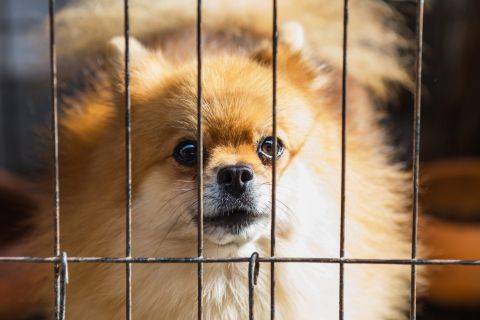
To my surprise, many new puppy owners do not crate their new arrival. Their thinking is that confining a new puppy to a cage will not be a good start to the owner-puppy relationship. They would rather the puppy be free to explore at will and thus become a happy part of the new family unit. Confining, they believe, will only instill fear and anger towards their new owner and they see it as a form of punishment.
In reality, crating is an absolutely healthy and necessary way to start your new puppy off on the right track. First and foremost, crating provides structure and an acceptance of boundaries. It also is an awesome housebreaking tool, helps save your valuable property from damage, and promotes a healthy relationship between the owner and puppy. All baby things, including humans, want and need structure in their lives. It’s healthy and necessary.
When a crate is used for structure, it establishes an appreciation in the dog that it must follow the rules. It’s not about punishing after an unsavory act, although it could be. Using the crate on a regular basis allows the puppy to understand and accept the concept that there are rules in their new home. A crate need not be a place that a puppy is afraid to go to or recognizes as the “bad” place. It can simply be a place for a baby dog (with a lot of energy) to decompress. To a puppy, it’s just to show them that it’s time to go to their own place for a while. The reason is defined by you!

What is Selection Pressure and why does it matter? Selection Pressure is defined as those changes that occur when the environment selects which members of a species live long enough to reproduce and which do not. Selection Pressure can help enhance new traits. People are always changing the Selection Pressure on animals, often in ways they didn’t expect.
Dog emotions are likely the most obvious way that Selection Pressure presents itself. An example would be the thin collie face. Breeders, over time, have thinned out the collie face, leaving less space inside the skull for the brain. Look at old Lassie shows – Lassie was a dog with a broad, flat forehead. Thinner skulls = smaller, more distorted brains = a less intelligent dog. Causing collies to become dumb wasn’t the goal, but rather a side effect. Breeders probably just wanted to enhance a feature unique to the collie, which is its long thin nose. But in the process of breeding for long noses, they bred in a thinner skull (with a smaller brain) and an animal that is not as smart.
Selection Pressures on purebred dogs are primarily negative, as observed with the collie. Also, breeders are trying to meet American Kennel Club standards, which are heavily weighted towards the way a dog looks aesthetically, not emotionally or behaviorally. The AKC strongly influences the dog-buying decisions of people in this regard.
When it comes to mixed-breed dogs, however, selective pressure can be a good thing. A mutt who bites people has a high chance of being put to sleep. That means its genes will be removed from the gene pool. Therefore, the argument can be made that mixed-breed dogs that end up reproducing are those that are good at living with people.
In terms of behavior, purebreds are responsible for the large majority of serious dog bites. The fact that mutts are less aggressive is evidence that Selection Pressures on mixed breeds are more favorable. A conclusion can then be made that, in general, mixed-breed dogs are easier to live with.
I’m not trying to influence a potential dog owner away from a purebred. I’ve lived with both purebreds as well as mixed-breeds and have had great experiences with each. Just know that there are a lot of things to consider when looking for your new companion.
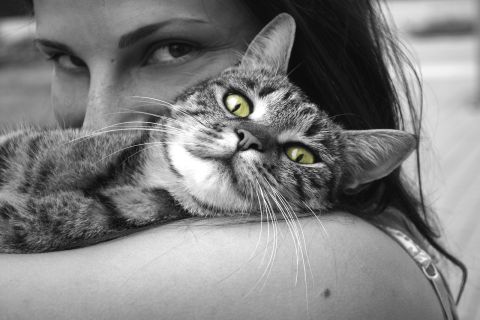
Pets such as dogs and cats have the same basic feelings and emotions that people do. Research is now discovering that reptiles likely share most of these emotions with us, too.
Think about it, our basic brain biological structure and function is also present in animals. We know how this function creates emotions in humans. Therefore, it’s safe to assume that animals, which resemble our biology, also have the same emotions. The similarities are such that emotion research on humans is performed on animals!
When we protect our children or have feelings such as fight-or-flight, animals react similarly. So what’s the difference? The difference is that animals can’t feel two things at once. Whereas people can have “love-hate” relationships with others, animals can’t. The reason your pets are so loyal is because they love you all of the time. Their emotions are much more simple and separate.
Since an animal’s brain doesn’t make as many connections as a human’s, their emotions seem to stay more separate and more pure. This is all according to science.
What I find most fascinating as an animal owner/observer is that there are instances when I look in my pet’s eyes or have an experience with my pet that contradicts the science. Science explains a lot, but not everything. And therein lies the joy of having pets. Maybe our pet is different and can know more and feel more than we should expect. My pets always find ways to surprise me, and at times I just know they are feeling more than I think they should!
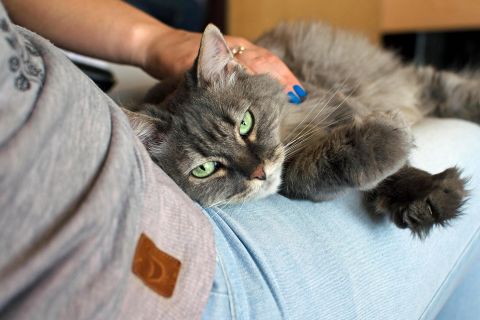
When teaching children (and adults too!) about proper interactions with animals, we’re likely leaving a lot of information out of the equation. Believe it or not, animals don’t like to be petted. Sounds strange?
Let’s swap out the word “pet” for “stroke” instead. There’s an important difference between petting and stroking. When we pet an animal, most of us think of small hand movements on an animal’s fur. Think of when a playful dog approaches and we naturally rub the fur on its head, kind of like how we’d tussle the hair of a child who is familiar to us.
The thing is, animals find this kind of touch uncomfortable and it makes them nervous. Try a stroke instead. What’s a stroke? A stroke is a longer, slower hand movement that encompasses a larger area of the fur. A stroke, for example, would be a slow touch of the length of a cat, with the entire hand, from it’s head to its back end in one motion.
A stroke reminds an animal of the way its mother’s tongue licked them when they were young. Even an older animal, many years removed from its mother’s care, will react positively to this kind of instinctual touch.
It’s not uncommon for a puppy or kitten to be removed from its mother earlier than it should. There’s really no way to time stamp such things, as each animal is different. If you become the owner of a new pup or kitten assume that it was separated from its mother prematurely. You can start off on the right track by stroking it in the same way its mother would. For an animal’s development, something as simple as this can be important for its brain development and impact future relationships with other animals, strangers, and you.
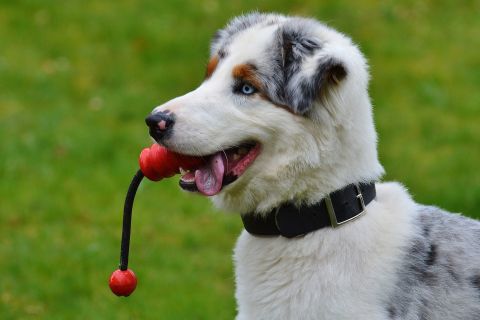
I recently worked with a two-year old mixed-breed dog named Buddy who was kept isolated and caged since birth. Thankfully, he was recently adopted into a loving home. However, he exhibits poor social behavior towards people and other animals. This is probably to be expected based on his history of abuse. His behavior is not necessarily aggressive, but just different, as if he doesn’t know how to be a dog. In particular, he doesn’t know how to play.
So why would a dog that is isolated behave strangely when reintroduced to other animals and people? Why can’t he simply interact and play with other dogs?
Let’s take a look at this from an evolutionary point-of-view and how being able to move, in a locomotor sense, has shaped what animals are and what they can do. As for the brain, physical movement is not only healthy for it, but is believed to be what caused it to evolve in the first place.
It seems that most, if not all dogs play at just about the same age relative to brain development. This tells us that movement, in the form of play, may be important for brain growth and socialization.
The cerebellum handles physical coordination, so it makes sense that a young animal (or a young human, for that matter) spends a lot of time being active and playing during the period that the cerebellum is forming new connections.
The locomotor play period also coincides with the period when muscle fibers are turning into whether they will be fast-twitch or slow-twitch. Fast twitch fibers are good for things such as sprinting, whereas slow-twitch fibers are necessary for things akin to long-distance marathons. Animals need both!
When you look at what young animals do when they’re playing, while noting that animals do the most physical play while the cerebellum is forming connections, it will probably be discovered that play is an important way that a young animal develops its brain’s ability to guide it’s movement.
So what does all of this mean as applied to our beloved pets? Dogs, especially puppies, need to be social with people and, if possible, other dogs in a physical sense. It’s critical for proper brain development that they are active and learn how to play. This is what Buddy was missing. So play with your dog – throw a ball to her, take her for long walks, and keep her active!
Although this is a topic for another day, I can’t help but extrapolate these findings to people. I wonder whether children today are being physical enough. Physical movement is probably the basis of a huge amount of academic, social, and emotional intelligence. Kids need to get outside and play. And while they’re doing it, they should take the dog with them!
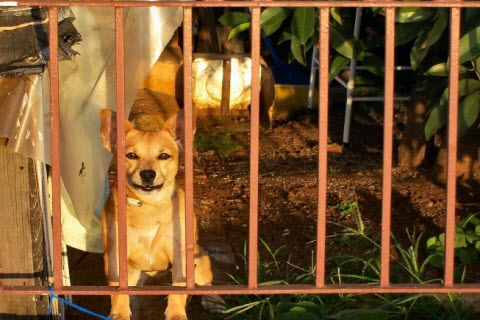
One of the worst things you can do to any animal is to rear it in isolation. It’s critical that your dog is properly socialized to other animals as well as socialized to people. Predominantly animals do what they learn from other animals. Adults teach their young where and what to eat and whom to socialize with. A dog isn’t born knowing the rules. He needs to be taught the rules by other dogs. Adults teach the young social rules and respect for their own kind. If an animal does not learn these rules when it’s young, it’s almost impossible to instill rules when it’s older.
When training, it’s easier to bring a new, younger dog into a home where one or more dogs already exist. The older dogs do a lot of the trainer’s work by teaching the newbie how things are supposed to happen!
I can remember a time in the suburban neighborhood where I lived that dogs were free to come and go as they pleased. It was not uncommon to see dogs roaming about the streets and everyone knew the dogs and to whom they belonged.
Before long, leash laws were put into effect and now witnessing a dog roaming a town is very rare. When it does happen it’s assumed the dog escaped from its home. Leash laws were necessary for the safety of residents as well as the dogs themselves. We need these laws, because stray dogs running loose can be dangerous, especially if a group of stray dogs starts thinking of itself as a pack. Several dogs together are more dangerous than one dog on its own because pack mentality. But leash laws have probably come at a cost.
Such laws, however, may be the root cause of some adverse effects on dog socialization. Unless the owner makes an effort, many dogs do not get properly socialized to other dogs, or to other people. It’s possible that leash laws may be short-circuiting some core principle of animal behavior. In nature, where animals are free to come and go, animals almost never seriously injure other animals that are familiar to them. On the flip side, dogs living side by side in fenced yards often do hurt each other if they can, even when they’ve known each other for years. This may be a case where proper socialization won’t help. The dogs have been properly socialized, but their environment, a fenced-in yard, isn’t helping.

I’m a huge supporter of adopting animals from shelters. Every pet my family has ever owned either came from a shelter or was a stray that was adopted. I’m a big fan of older animals as well. When I adopt an older animal, I feel I have to earn its trust and love in a way that’s more challenging than a baby. I thoroughly enjoy that process and it makes, in my opinion, the bond I have with a new pet even stronger.
If you’re like me and you are considering giving an older pet from an adoption center/shelter a home, I applaud you. However, let’s not go into this blindly. Do your due diligence on any animal you’re considering. Older dogs with shady or unknown histories can bring unique risks. Be wary of an animal that has spent most of its life having been isolated and/or caged, as this is a good recipe for aggression.
Isolated animals usually are animals that haven’t been properly socialized to their peers, other animals, and humans. Dogs need to be taught that it is unacceptable to threaten or bite a person or chase a young child thinking it is prey. These are lessons that are usually taught in puppy-hood and as dog owners we don’t give them much thought.
Dog owners must establish themselves as the alpha no matter what the age of the dog. A dog who thinks he’s the alpha in the home is dangerous to people and other animals as well.
This is not to say that older dogs who have been caged for a long are to be feared and not worthy of being given a chance. Just procure all of the historical information on a given animal that you can, and most importantly trust your instincts.
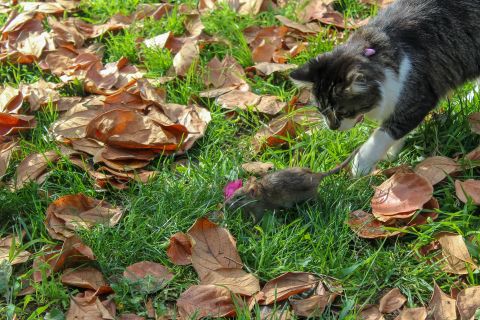
When a predator kills prey it feels good to the predator because it usually means they get something to eat. Killing a mouse, for example, feels good to a cat. It has been shown that the brain circuits for predatory killing come from “essentially the same brain areas” as the “searching” circuit, which produces pleasurable feelings of curiosity and anticipation.
When the “searching” circuit is turned on, animals (and people) seek the things they need such as food and shelter. People and animals love the hunt. Spend some time playing with a cat using a laser pointer. Cats can get carried away chasing and pouncing on a red laser dot. They are truly enjoying the hunt. Cats then go into hyper-activation of the predatory chasing instinct and are so fixated they could have injured themselves.
Cats can see the dot but can’t ever catch it. The laser dot probably becomes a stimulus that doesn’t turn off because the cat can’t complete the final catch, so the chase instinct is in a perpetual loop.
It’s somewhat strange that the way a cat will attack a laser pointer is not the way a cat will behave outside chasing live prey.
Some cats will not chase laser pointers, but why? Cats raised inside are more likely to become hyper-focused while chasing a laser pointer dot. Cats raised outside learn what is good to chase and when to chase it. They learn to control their chasing instinct so they can stalk prey and get close enough to catch it. An outdoor cat that has learned to hunt actual food may not be interested in a laser dot. For one, a laser dot is not food and cats have made the connection between chasing and eating. Also, cats know how to suppress their chasing instinct. They aren’t seduced by the rapid motion the way domestic cats are. Nevertheless, the fact that some cats don’t chase laser pointers while others chase frantically may prove that what an animal chases is learned, not instinctual.

Should you Use a Search Dog?
The first thing a missing pet owner often wants to know is if I own or have access to a search dog. Despite the momentary unintentional attack on my ego, as if my pet-finding skills are no match for a scent dog, I calmly explain the pros and the cons of using a search/scent dog.
It should be noted that search dogs are not machines. There is no doubt that their sense of smell is much more finely tuned than that of a human, but let’s slow down. Scent dogs can be great in the right situation or not-so great in certain situations. Also, let’s not put pressure on scent dogs to perform miracles!
There are a lot of variables that can make life difficult for a search dog. These include…
- Heat, dryness, and the passage of time.
- Concrete and asphalt.
- Car traffic can obliterate a scent.
- Lawn mowers which can obscure, dilute, and scatter the scent trail.
You get the picture.
Finding your lost pet can be difficult for a scent dog in the best of situations. The best circumstances for hiring a search dog are:
• Cloudy, cool, non-stormy weather.
• A scent trail that is less than 48 hours old.
• When you have something that only contains the scent of your dog. (bedding, toy, etc.)
• When you live in the country as opposed to the city.
• When your dog has a personality that won’t cause it to approach strangers.
• When you have a recent sighting.
In general, if you have the right circumstances for
a search dog, hiring one will be beneficial most of the time and ineffective on occasion.
You should not hire a search dog if:
• Your dog has been missing for a week or more, and you have had no recent sightings.
• You have many pets and nothing in your home that contains ONLY the scent of the target animal.
• You walk your dog all around the neighborhood every day, and the search dog would have trouble telling today’s scent from yesterday’s scent.
• The person working the search dog can’t give you references from past clients – this is important!
So why would you ever hire a search dog? Well, there’s always the chance this will be that lucky day. Also, even if the search dog doesn’t find your dog right away, she can provide many benefits such as a direction of travel. A search dog can also tell you where your dog is not. So weigh the pros and cons. Search dogs can be a useful tool in the right situations, but using one doesn’t necessarily increase the chances of recovering your pet.

Lately I’ve driven through several busy intersections and noticed, out of the corner of my eye, small posters adorning telephone and light poles with the words “Lost Pet” on them. Since I was driving and paying attention to the road, the only information that clearly registered in my brain were the words “Lost Pet” and nothing else. The posters were letter size and white and I believe they had pictures on them, although I’m not sure. Since I’m a pet detective, I quickly realized when when I passed by such a poster, that I had a momentary bout of inattentional blindness.
What’s inattentional blindness? Inattentional blindness is a pyschology term and is defined as a total failure of perception under conditions of inattention. So what does that mean? Basically it means that there is no perception without attention. So unless someone is paying attention to something, they will not “see” it or notice it.
We all experience inattentional blindness from time to time. One common way that it’s often depicted is when trying to remember a missing child whose photograph is on a milk carton. Think about it – if you saw a small picture of a missing child in the morning would you be able to notice the same child if you walked past him or her on a crowded street in the afternoon when other events of the day have clouded your mind and the milk carton is no longer front and center of your consciousness?
In inattentional blindness, you miss a new stimulus, often because of your own expectations. Your brain is sophisticated enough to help you register and interpret visual cues that it thinks will provide you with the most value. But, in its efforts, visual information, both important and not, can sometimes get overlooked.
So how can we make sure that our “Lost Pet” posters can overcome busy minds of people driving through intersections? First, we have to assume that people are always going to be in “inattention” mode. Second, we have to make sure our posters are impactful and are able to overcome inattentional blindness.
So make those posters big, colorful (fluorescent poster board) and attention-getting. Imagine yourself distracted with many thoughts while driving through an intersection and you only have a split-second to look at a poster. Have the message “LOST DOG” or “REWARD LOST WHITE CAT” front and center with a large, clear picture of the animal so it can quickly register in someone’s mind.
Your goal is to figuratively “smack” someone into paying attention to your message so that you can bring your pet back home.












